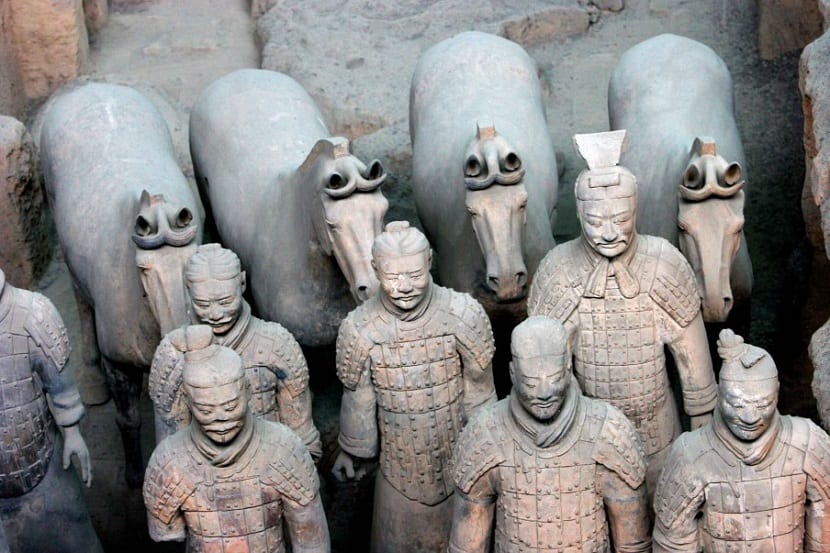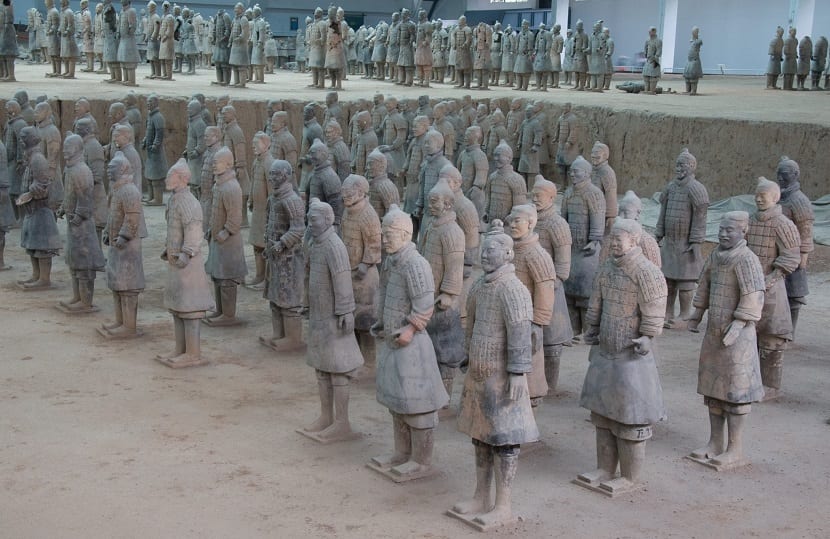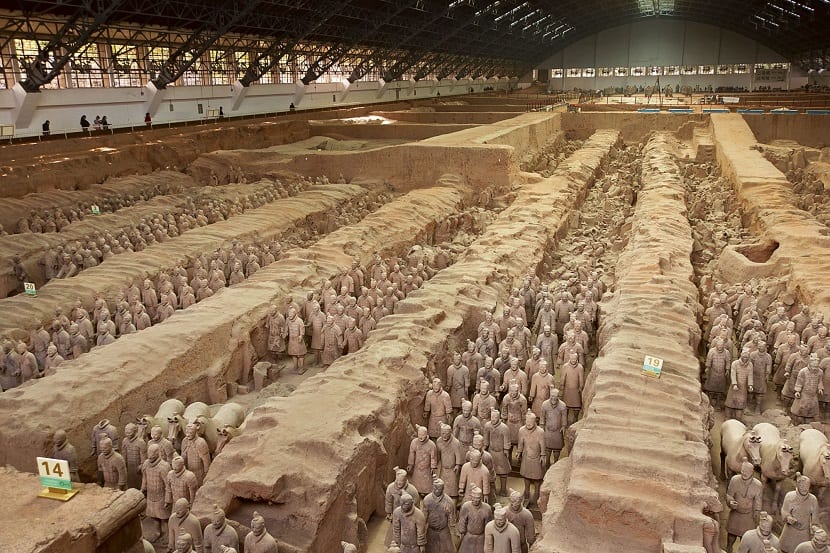
Yesterday we brought you the first of these two articles, which you can read here. In it, we spoke to you briefly and gave you a series of curious details about the Great Wall of China and everything that surrounds its famous construction. Today we bring you more information, but this time about another great site that you should not ignore if you travel to the Asian country: the Terracotta Army or also known as "Terracotta Warriors".
A Little History
El imperial mausoleum of Qin Shi Huangdi It represents a total innovation in the Chinese funeral tradition. The imperial burial mound itself is located under an artificial hill, together with its grave goods, and in an adjoining room is the so-called terracotta army, a terracotta reproduction of the imperial army.

Qin Shi Huangdi sculpture
Until that date, royal grave goods were made up of bronze, bone, jade objects and even small wooden figures that represented different characters from the daily life of the time. It was also customary to bury the deceased's survivors and concubines alive, so that he could enjoy their company. This happened until Confucius harshly censured this custom, producing a gradual replacement of real people by a reproduction of the same in wood carving and later in ceramic.
Formation of the «Terracotta Army»
Qin Shi Huangdi decided to combine both traditions: along with his terracotta army, many of the people who had participated in the work were buried, as well as servants of his court. It is what the imperial mausoleum represents today: a total of four graves perfectly delimited they house the members of the army, arranged in a very similar way to that of real combat. The first ranks correspond to the light infantry, which hardly takes protection. Behind are the soldiers with armor and iron spears, and further back and last, is the cavalry.

In the vanguard are the soldiers who are equipped with crossbows, and on the sides, the archers, some of them represented with one knee on the ground. In the background, there is the headquarters with bronze chariots and spears, as well as a total of 68 figures facing each other.
The terracotta army comprised a total of 5000 figures, all of them made of terracotta, as the name suggests. However, with further excavations a total of more than 8000 figures. Their bodies and limbs are made with molds, but each of the faces presents an individualized sculptural treatment. The Average height of these figures is 1,68 meters and in some cases there are still remains of the polychrome with which all the figures were covered. The soldiers all carry authentic weapons that were stolen by grave robbers after the fall of Qin.
Still not happy the emperor, he wanted to record his burial outside of it and ordered a hill to be raised on it. However, the interior appearance of the tomb is only known from Sima Qian's descriptions of it. It speaks of a vision of celestial vaults, starred with pearls, of lands crossed by rivers of mercury and silver. Everything metaphors to imply that the first Chinese emperor was surrounded by innumerable riches.

A few years after the death of the Chinese emperor, his dynasty, founded as immortal, was annihilated. But the dynastic denomination gave its name to the country outside its borders, and since then it began to speak of China with the meaning of "Country of the center", "Han country" o "Katay".
Un curious fact about this army, but most of all of his emperor, is that his pyramid-shaped tomb has not been opened until now because the archaeologists themselves have said that opening it would surely lose part of the value it contains inside, since it could ruin certain materials with which it is made.
Other curious fact, this time about the army, is that not all the figures have the same features, but their faces are different. They correspond to the different Chinese ethnicities there was.
We hope you liked this double article about two great places you must visit in China. If so, let us know with a comment so that we can continue to offer on this blog what you like to read and learn about.